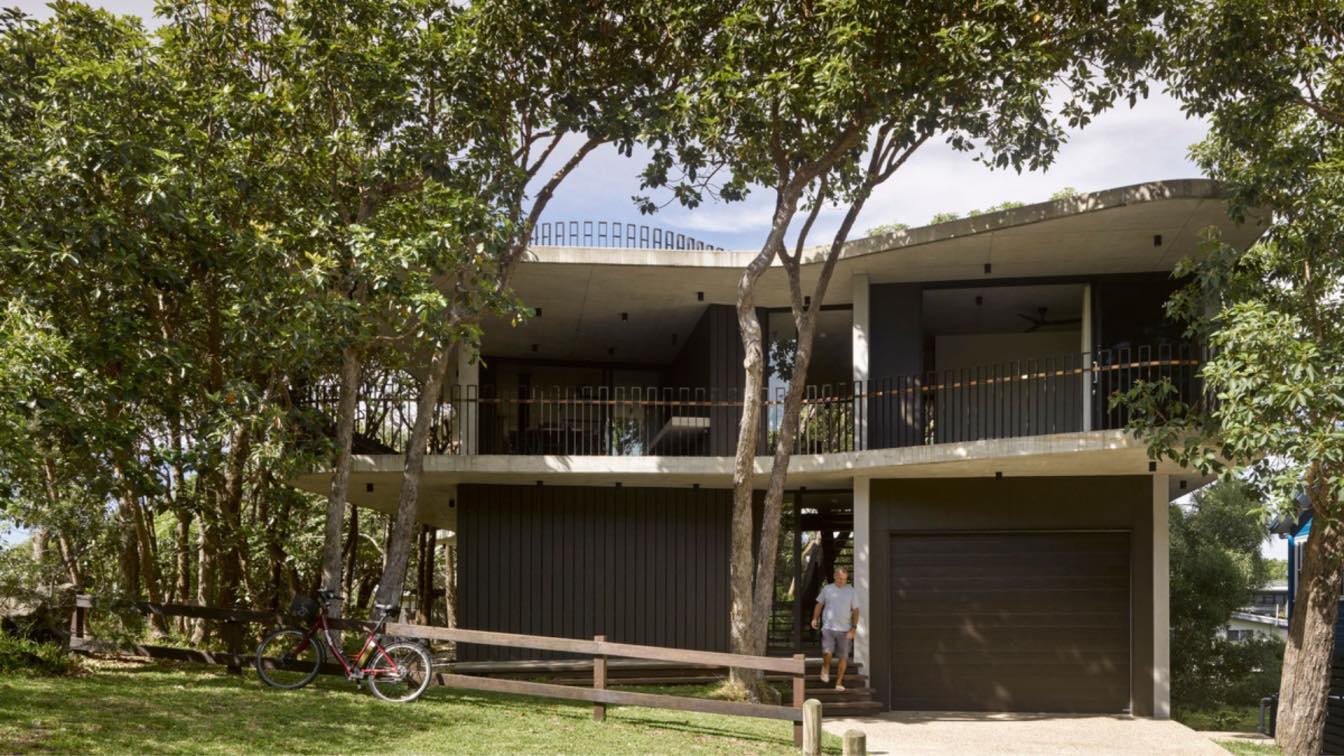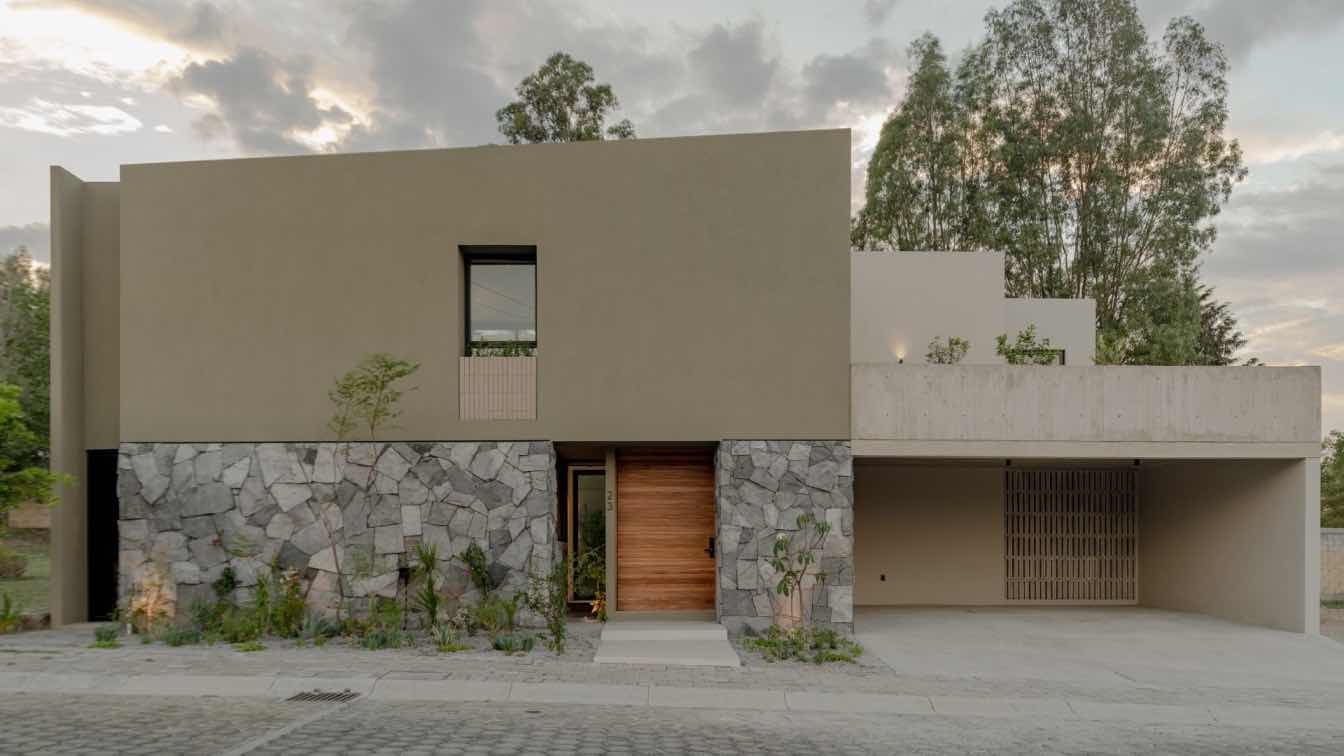Conrad Gargett: Drawn to the extensive vegetation rather than the views to the ocean, the client’s brief asked for an experience “like camping amongst the trees, but without the tent”. Rather than optimising views to the ocean that may be lost over time as the foreshore vegetation matures, this home is thoughtfully woven between the existing stand of Brushbox trees on the site. By retaining as many trees as possible, the light-filled and open upper level living spaces are connected to the canopy.
Sited atop a sand dune, 70m above North Stradbroke Island’s Frenchman’s Beach, this house is an elegant response to some of the most challenging environmental conditions southeast Queensland faces. The house is designed to resist winds up to 300km/h due to the site’s headland location whilst the external materials and glazing address an extreme bush fire rating of BAL40 due to the adjoining bushland. Following a detailed survey of the existing trees on the site, the plan of the house was manipulated to retain as many of the trees possible.
Designed as a holiday home for three couples, the lower level provides the main entry, three ensuited bedrooms and a generous garage. The arrival view from the double height entry is toward five significant trees all bending in response to the prevailing sea breeze. The base supporting the ground floor has been recessed to further reduce the house foot print and minimise the impact of foundations on the existing trees.

The upper level is conceived as a transparent glazed living platform. The eastern and northern edges of the balcony and floating roof fold in plan to wrap around trees. The narrow plan establishes a strong visual and physical connection with the trees on the beach and land sides whilst the spiral stair provides accesses to the roof top party deck with 360-degree ocean views.
The recessed ground level bedrooms and concrete structure allow the upper level floor and roof to be as thin as possible, adding to the design idea of a living platform floating within the tree canopy. The non-combustible balustrade provides additional texture to the living levels and provides a level of visual privacy from people walking along the whale watching trail. The refined material palette responds to the tones and texture of the Brushbox trees.
Brass finishes are used extensively through the house, selected to weather and patina over time with the salt air. Glazing has been maximised to the living areas and entry space reaching the limit available under the Building Code of Australia Energy Efficiency requirements. The non-combustible balustrade provides additional texture to the living levels and privacy from people walking along the whale watching trail. Masonry walls to the south and west are rendered with expressed joints whilst walls adjacent the entry and facing the streets are clad in vertical paneled copper.




























